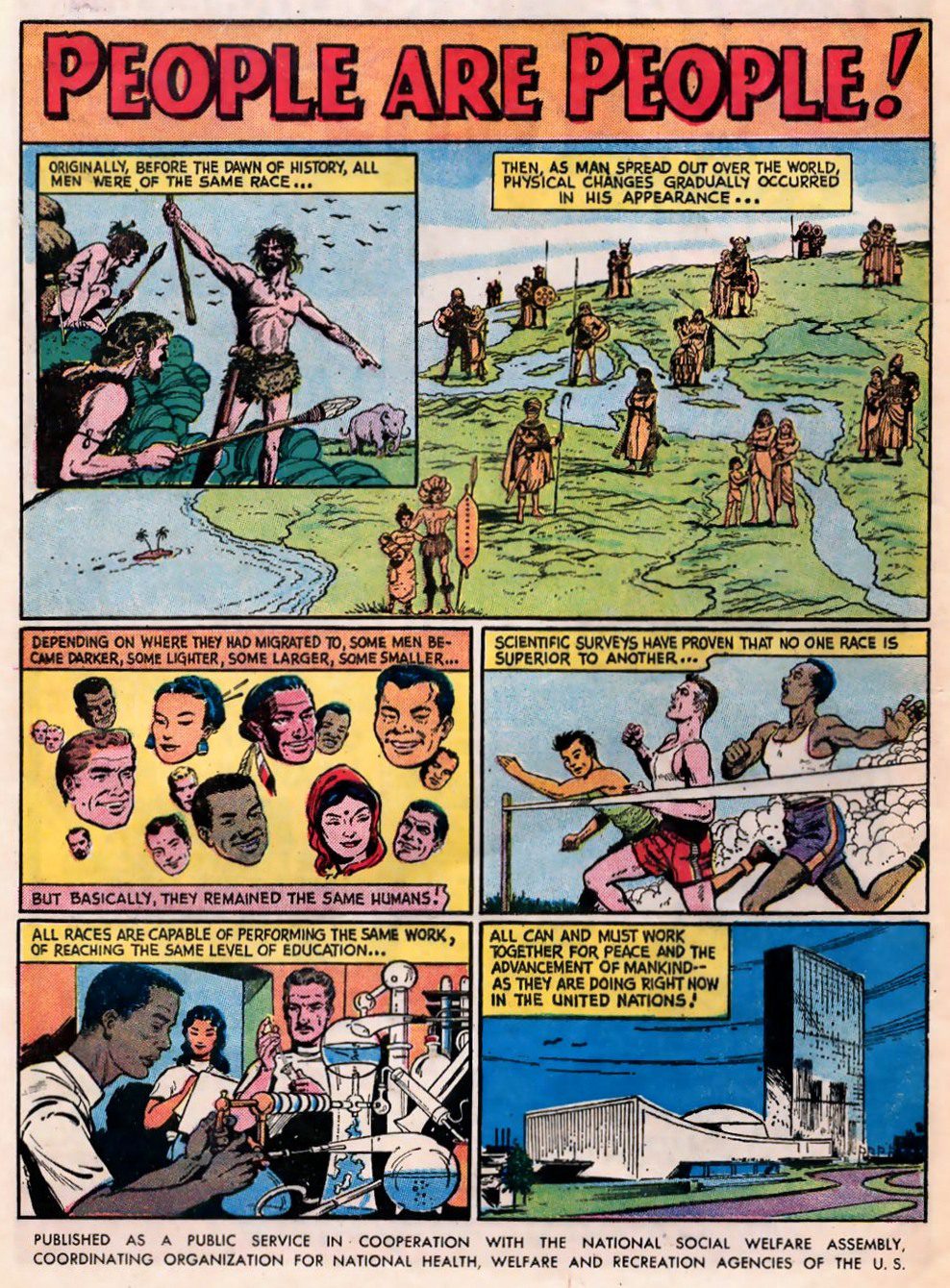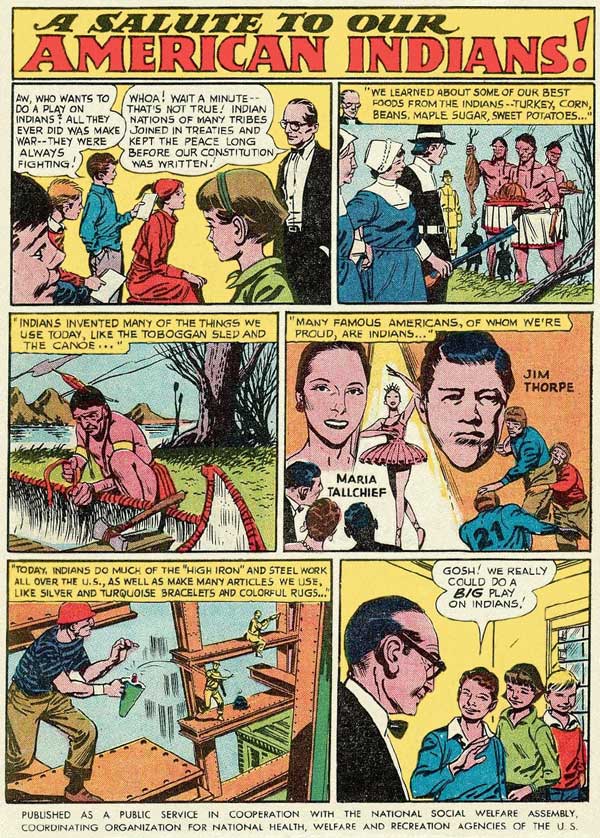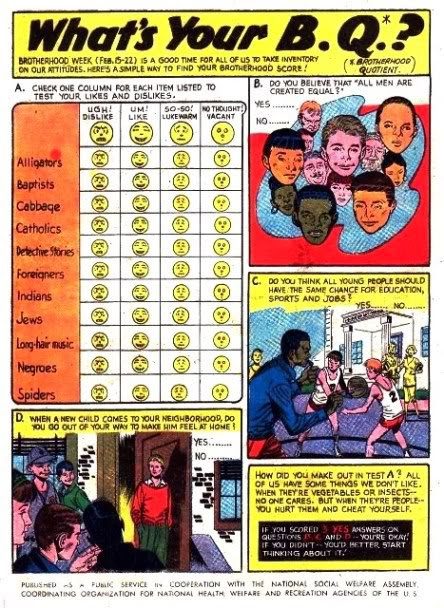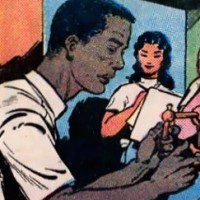The New York Comics & Picture-Story Symposium is a weekly forum for discussing the tradition and future of text/image work. Open to the public, it meets Tuesday nights 7-9 p.m. EST in New York City. Presentations vary weekly and include everything from historical topics and technical demonstrations to creators presenting their work. Check out upcoming meetings here.
***
The 118th meeting of the New York Comics & Picture-Story Symposium was held on Tuesday, March 17th, 2015. William H. Foster III presented “The Image of African Americans in early American Comic Books: 1940-50.”
William H. Foster III is the college professor you never forget. He radiates knowledge, enthusiasm, and openness. He clearly loves what he’s  talking about and he’s got positivity shooting out of his ears. That was the first thing I noticed about him as he began his talk, “The Image of African Americans in Early American Comic Books: 1940-50.” The second thing I noticed is that he wasn’t really going to talk about that at all. Whether it was planned or not, Foster went rogue, and it was thoroughly enjoyable to witness. Instead of the proposed topic, he presented on a colorful series of public service comics from the late 1940s through the early 1960s, and while they included images of African Americans they certainly weren’t the focus of his talk.
talking about and he’s got positivity shooting out of his ears. That was the first thing I noticed about him as he began his talk, “The Image of African Americans in Early American Comic Books: 1940-50.” The second thing I noticed is that he wasn’t really going to talk about that at all. Whether it was planned or not, Foster went rogue, and it was thoroughly enjoyable to witness. Instead of the proposed topic, he presented on a colorful series of public service comics from the late 1940s through the early 1960s, and while they included images of African Americans they certainly weren’t the focus of his talk.
Native Americans, Asian Americans, and other representations of “others” were also represented in these comics, which were typically published in the back pages of popular comic books like DC Comics’s Superman. This was during a time when Frederic Wertham’s book, Seduction of the Innocent, had convinced the general public that reading comics begat teenage delinquency. To counter this assertion, many comic books included these PSA comics that promoted good behavior and idealized American citizenship. Topics like neighborliness, international charity, prejudice, human rights, and good ol’ fashioned American excellence number among the not-so-subtle lessons within the traditional six panel layouts.
 Stamped at the footer of each of these comics is the following text: “Published as a public service in cooperation with the National Social Welfare Assembly, coordinating organization for national health, welfare. and recreation agencies of the US.” While it’s unclear who wrote and illustrated the comics it’s obvious that the NSWA—which was a consortium of national non-profit organizations like the American Red Cross, the Girls Scouts of America, and the Salvation Army—officially approved of and propagated the ideas in them.
Stamped at the footer of each of these comics is the following text: “Published as a public service in cooperation with the National Social Welfare Assembly, coordinating organization for national health, welfare. and recreation agencies of the US.” While it’s unclear who wrote and illustrated the comics it’s obvious that the NSWA—which was a consortium of national non-profit organizations like the American Red Cross, the Girls Scouts of America, and the Salvation Army—officially approved of and propagated the ideas in them.
In “People Are People,” the concept of racial and ethnic diversity is described as differences in size and color as an outcome of migration. It emphasizes that everyone is the same underneath our phenotypical characteristics. In other words, any one of us can run a race and conduct a chemistry experiment just as well as the next guy. The last panel in this comic weirdly and incongruously tips a hat to the United Nations.
In “A Salute to Our American Indians” we learn that, one, American Indians apparently belong to “us;” and, two, as a group they are much more than a bunch of warmongers. They can also play football and do construction work! Next, “The Invisible Handicap,” depicts a boy that has brain damage and is mocked because he doesn’t draw very well, but then later he inexplicably learns to draw better and everybody seems much happier.
and everybody seems much happier.
The messaging is hilariously incorrect and oversimplified for contemporary adult readers, but the work shows a sincere attempt to influence positive behavior in young people. These comics were made during a strange and difficult time in our history—while the lessons of World War II still hung heavily in the air, and while McCarthyism and American idealism were at an oppressive high. People were afraid of history repeating itself and in order to prevent that they had to change paradigms. And to do this, you generally have to start with young people.
Foster points out, “there’s always something to blame for the corruption of the youth.” The blaming of comics as a source of youth corruption and teenage delinquency in part came out of fear of losing control over the future of our country, and that fear does weird things to people. It can make Sunday school teachers start rapping and make your mom start hashtagging. Adults in every generation try to talk to kids “on the level” to get them to do things differently than they did.
These comics were not just a part of Foster’s research; they were part of Foster’s youth. They were personally transformative and helped to develop his attitudes about the world around him. Foster grew up in a tough neighborhood in Philadelphia that he describes as the ghetto version of Lord of the Flies. He saw these comics as encouragement to reach outside of who he was. It taught him that the person you become is the result of the behavioral choices you make. (Thank you, Superman!)
They were personally transformative and helped to develop his attitudes about the world around him. Foster grew up in a tough neighborhood in Philadelphia that he describes as the ghetto version of Lord of the Flies. He saw these comics as encouragement to reach outside of who he was. It taught him that the person you become is the result of the behavioral choices you make. (Thank you, Superman!)
It’s not necessarily that Foster believes that comics like these are the solution. You can’t just make a comic about how everyone is equal and think progress has been made. Obviously. But he does acknowledge that comics have a unique ability to teach empathy for people whose experiences are different than your own. That’s what these PSA comics did for him as a kid, and it’s what comics can still do today.
***
All images published in cooperation with the national social welfare assembly, coordinating organization for national health, welfare, and recreation agencies of the US, copyright dates unknown.
***
William H. Foster III is a professor of English at Naugatuck Valley Community College, Connecticut. He has been an expert commentator on comics for both CNN News and National Public Radio. He curated the traveling exhibit, “The Changing Image of Blacks in Comics” which includes an extensive collective of comic books, comic strips, posters, and original art. He is the author of three collections of essays on blacks in comics: Looking for a Face Like Mine (2005), Dreaming of a Face Like Ours (2010) and a third scheduled to be out later this year. In 2014 he served as a judge for the International Comic Con Will Eisner Comic Industry Awards.
***
About the Author: Monica Johnson is a comic artist and student debt activist living in Brooklyn, NY. She self-publishes mini-comics through Wool & Brick Press, and is working on a full length graphic novel titled The Adventures of Dorrit Little, a tale of the average student debtor in the United States today. Connect via @woolandbrick.




